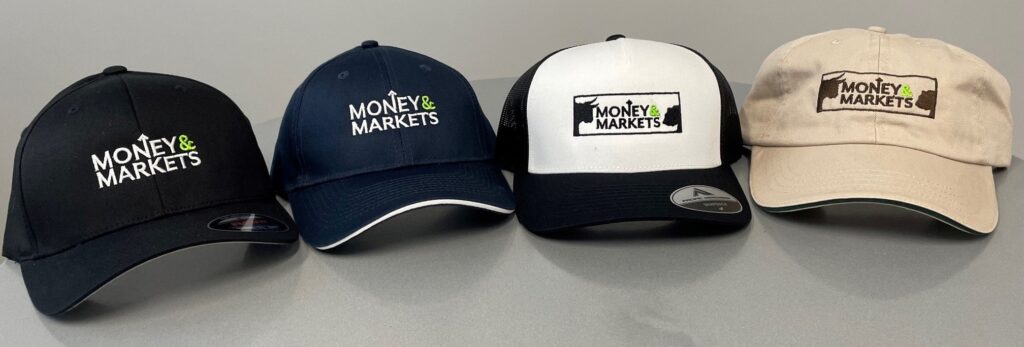In this Marijuana Market Update, I talk about whether the new Roundhill Cannabis ETF (CBOE: WEED) is a buy.
I break down the holdings and strategies in this cannabis exchange-traded fund (ETF) to find out what differentiates it from others in the industry.
On April 20 — the international cannabis holiday — Roundhill Investments launched its new cannabis-related ETF.
Roundhill cited recent projections that the global legal cannabis market could reach more than $61 billion in sales by 2026, as well as the state of legality of cannabis in the U.S., the largest market in the world as some reasons to launch the WEED ETF.
At launch, WEED had 24 holdings and included the ability to buy options on the ETF.
What’s in WEED?
Let’s look at the thematic breakdown of the 24 holdings in WEED:
Of those holdings:
- 63% are multi-state operators (MSOs) like Curaleaf Holdings Inc. (OTC: CURLF) and Trulieve Cannabis Corp (OTC: TCNNF).
- Another 21.5% are companies based in Canada, such as Tilray Inc. (Nasdaq: TLRY) and Canopy Growth Corp. (Nasdaq: CGC).
- It also has 10.2% of its holdings listed as ancillary cannabis companies like Innovative Industrial Properties Inc. (NYSE: IIPR).
- And 0.9% of WEED’s holdings are international companies.
How does the nationality of holdings break down?
- 62.3% of its holdings are based in the United States.
- 36.8% are in Canada.
- 0.9% are international holdings all based in Britain.
So there is a little diversity, but not more than any other cannabis ETF.
Now we can look at the breakdown of the market capitalization of companies the ETF holds:
WEED does have a bit more mid-cap ($2 billion to $10 billion) exposure than some of its competitors, with 63.4% of its holdings in that range.
The remaining 36.6% are considered small caps (less than $2 billion in market cap).
While a majority of public cannabis companies would be considered small cap, most ETFs aren’t going to hold a lot of small-cap stocks in their portfolios because of increased risk.
I segmented a few of WEED’s holdings and compared them to the market:
I picked two random cannabis ETFs — the ETFMG Alternative Harvest ETF (NYSE: MJ) and the AdvisorShares Pure Cannabis ETF (NYSE: YOLO) — to compare because holdings don’t vary too much between the top nine cannabis ETFs on the market.
However, there is some difference in the percentages some of these holdings make up in a particular portfolio.
For example, CURLF accounts for 13% of WEED’s portfolio. In contrast, MJ and YOLO don’t hold Curaleaf.
All three hold CGC, but the percentages vary widely:
- 7.42% in MJ.
- 5.13% in WEED.
- 3.35% in YOLO.
From this, you can kind of tell the direction this new ETF is going. WEED is looking at larger percentages of American-based MSOs.
Then we can compare the management fees, or expense ratios, and the trailing returns of the nine major cannabis ETFs currently trading on the market:
The average expense ratio of a cannabis ETF is about 0.70%. As you can see, some are above that, while some are below.
What’s interesting is that Roundhill is waiving 0.16% of its expense fee on WEED until April 30, 2023. For the next year, the expense ratio of WEED is just 0.59% — putting it at the low end of cannabis ETFs.
However, next year, that expense ratio will jump to 0.75%, making it one of the highest, but still in line with other cannabis ETFs.
In terms of trailing returns, cannabis ETFs declined over the last three months. WEED, which has not been around for even a month, is already down around 12% as I write this.
So, outside of waiving part of its management fee for a year, I don’t see a lot special about WEED. But it’s still early in the ETF's existence.
The Takeaway: If you are trying to decide on a cannabis ETF to invest in, the best approach is to see what the funds hold and the weight of each of those holdings in the portfolio. That will give you a good indication of the investment strategy of the ETF.
WEED is diversified a little more than others, with WM Technology Inc. (Nasdaq: MAPS) and Leafly Holdings Inc. (Nasdaq: LFLY) in its portfolio, whereas few other ETFs in the space have allocated spots for those kinds of stocks.
The idea is to find an ETF that is more diversified, so you don’t have all of your eggs in one cannabis basket per se.
One more thing: You can get Money & Markets swag by submitting a question for me, Adam O’Dell or Charles Sizemore that we’ll use in any of our videos. Just send us your questions and feedback.

Where to Find Us
Coming up this week, we’ll have more on The Bull & The Bear podcast, so stay tuned.
Make sure you subscribe to our YouTube channel and get notified each and every time we post a new video.
We have a lot of great weekly video features on our channel, including:
- Ask Adam Anything — Where I get to sit down with Chief Investment Strategist Adam O’Dell and ask him any question (from you or me) and get his insights into the stock market.
- Investing With Charles — Green Zone Fortunes Co-Editor Charles Sizemore and I talk about all things related to stocks and the economy, including comparing stocks to give you the best investment advice.
- The Bull & The Bear — Our weekly podcast where I show you the trends and analysis that move the market.
All of these series are on our YouTube channel.
Also, you can follow me on Twitter (@InvestWithMattC), where I’ll give you even more insights, not just in the cannabis market.
Safe trading,

Matt Clark, CMSA®
Research Analyst, Money & Markets
Matt Clark is the research analyst for Money & Markets. He is a certified Capital Markets & Securities Analyst with the Corporate Finance Institute and a contributor to Seeking Alpha. Prior to joining Money & Markets, he was a journalist and editor for 25 years, covering college sports, business and politics.






